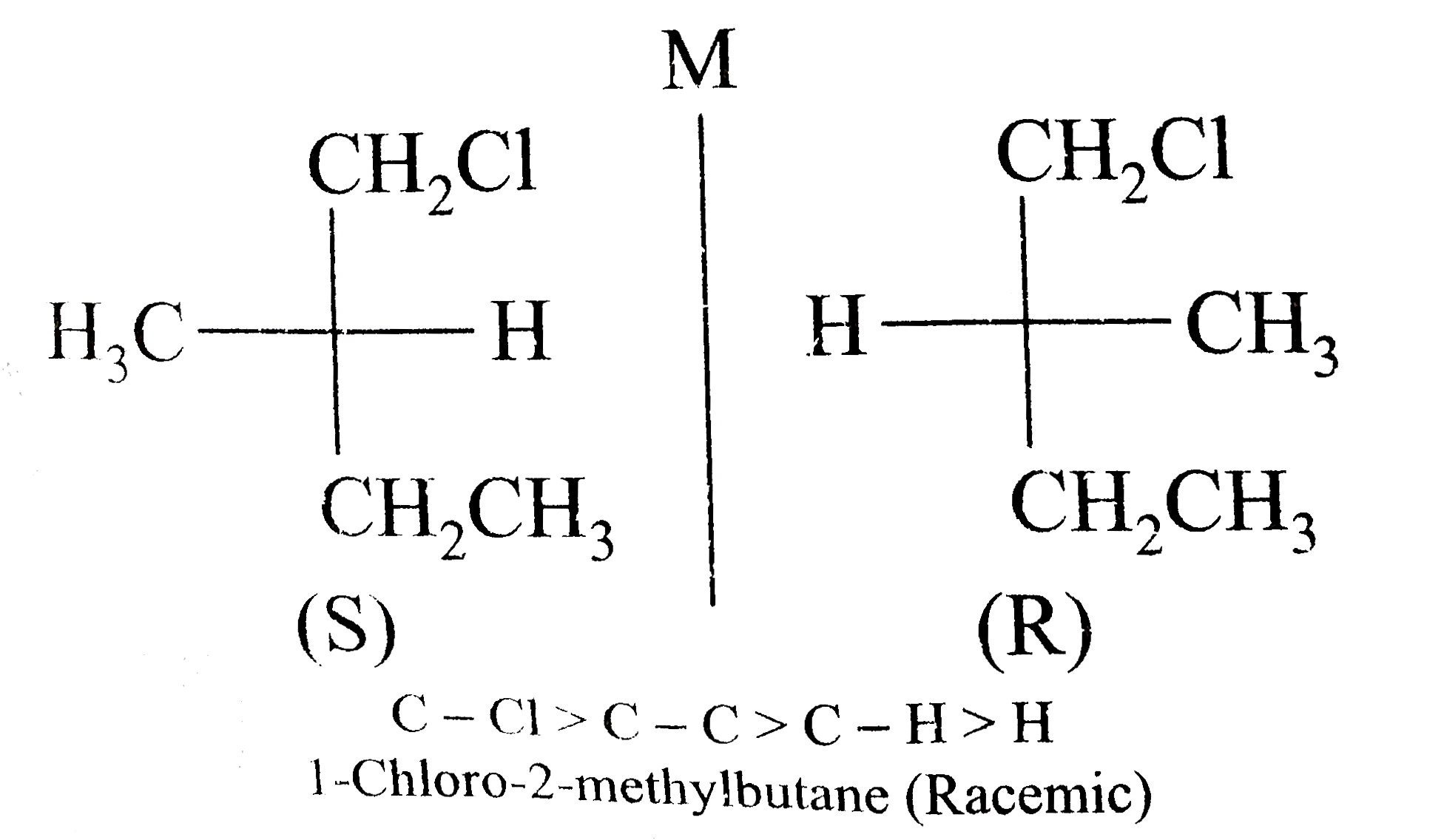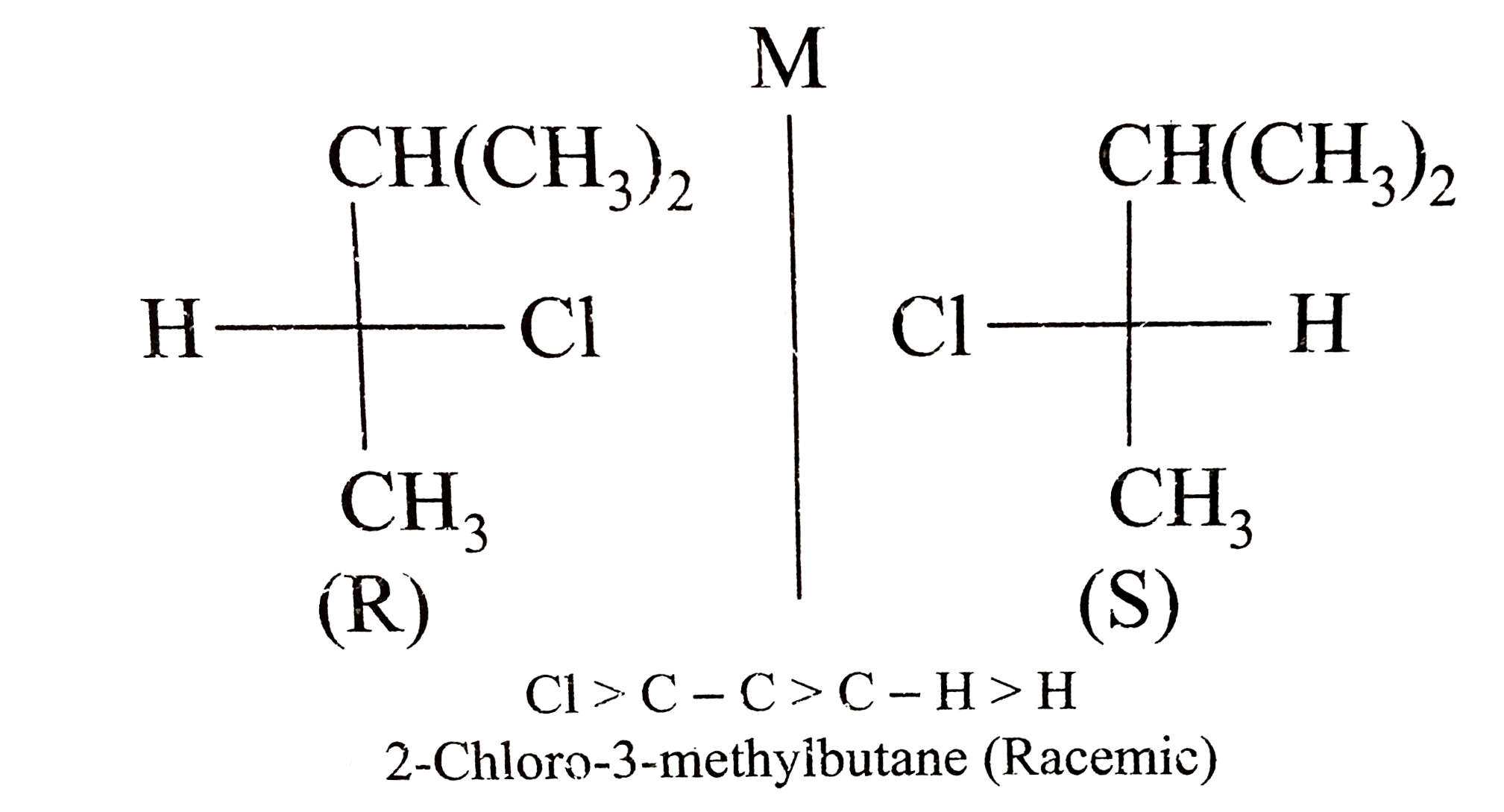Isopentane is allowed to undergo free-radical chlorination and the reaction mixture is separated. How many optically active fractions of formula C5H11CI would you expect to collect?
Zero
Two
One
Four
The correct Answer is:A
Four fractions are collected but no fraction is optically active because each fraction is eithe a single achiral compound or a racemic modification (Inactive reactants give inactive products)
CH3∣CH3CH2CHCH3IsopetaneCI2−−→CH3∣CH3CH2CHCH2CI∗1−Chloro−2−methy1 butaneCH3∣+CH3CH2CCH3∣CI2−Chloro-2-methy1 butane+CH3∗CHCHCH3∣CHCH3∣CI2−Chloro-3-methy1 butaneCH3∣+CICH2CH2CHCH31−Chloro-3-methy1 butane
Fraction 1

Fraction 2

Fraction 3, Fraction 4
CH3∣CH3H2C−CH3∣CI2−Chloro-2-methylbutaneCH3∣CICH2CH2−C−CH3∣H1−Chloro-3-methylbutane
Replacement of eithe H on−CH2−(in isopentane) to give 2−chloro−3−methylbutane is equally likely and replacement of any H on either −CH3(in isopentan) to given 1−chloro2−methylbutane is equally likely, in each case giving rise to the racemic modification.
Topper's Solved these Questions
- STEREOCHEMISTRYBOOK - R SHARMACHAPTER - STEREOCHEMISTRYEXERCISE - Follow-up Test 2
1 Videos
- STEREOCHEMISTRYBOOK - R SHARMACHAPTER - STEREOCHEMISTRYEXERCISE - Follow-up Test 3
1 Videos
- STEREOCHEMISTRYBOOK - R SHARMACHAPTER - STEREOCHEMISTRYEXERCISE - Follow-up Test 1
1 Videos
- SOLUTIONSBOOK - R SHARMACHAPTER - SOLUTIONSEXERCISE - ARCHIVES
42 Videos
- SURFACE CHEMISTRYBOOK - R SHARMACHAPTER - SURFACE CHEMISTRYEXERCISE - Archives
18 Videos
Similar Questions
Knowledge Check
Optical active amine of molecular formula C4H11N on reaction with nitrous acid gives
Abutan -1-olB2-methyl propan -1-olC2-methyl propan -2-olDbutan -2-olHow many compounds show optical isomerism of molecular formula C5H12O?
A2B3C4D5Of the possible structure of the molecular formula C5H11Br how many are opticllay active ?
A1B4C5D3
Name the alkane that forms only one product of formula C5H11CI by chlorination.
View SolutionHow many structural isomers are possible for the molecular formula C5H11Br?
View SolutionHow many chiral compounds of formula C5H12O will give optically inactive compound of formula C5H10O on heaing with H⊕KMnO4?
View SolutionAn optically active compound [A] C5H13N reacts with alkaline CHCl3 to give an optically active, compound [B]. [A] also reacts with nitrous acid to give an optically inactive alcohol [C] C5H11OH as the major product. What would be the structure of [A]?
View SolutionIt we see the reaction of methane with halogen, the rate determining step for chlorination is, endothermic reaction of the chlorine atom with methane to form methyl radical and a molecule of HCl. So free radical is the intermediate of the reaction. Formation of free radical depends upon the energy required to break a bond between a hydrogen atom and a carbon atom. Chlorination of propane and Bromination of propane. when compared it is found that bromination is more selective than chlorination. The probability factor for 3∘,2∘,1∘H atom is 5.0:3.8:1.0 at 25∘C for chlorination.
Isobutane when reacts with chlorine in presence of ultra violet radiations yield 2 products primary hydrogen substituted and 3∘ hydrogen substituted Find their % in product mixture
View Solution
